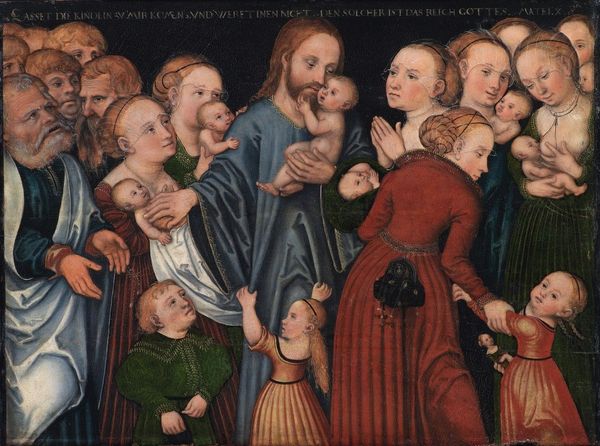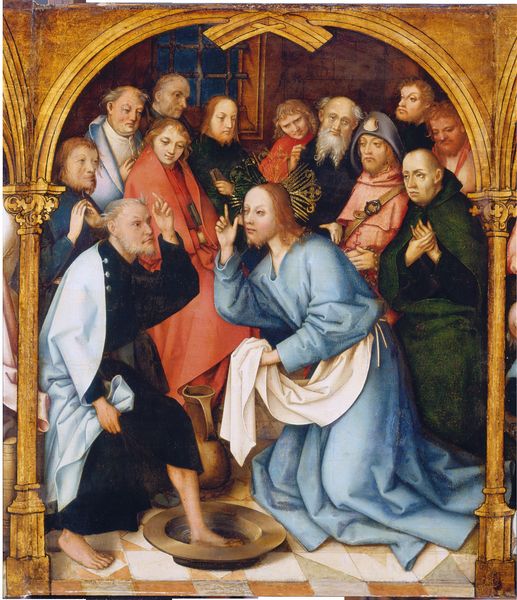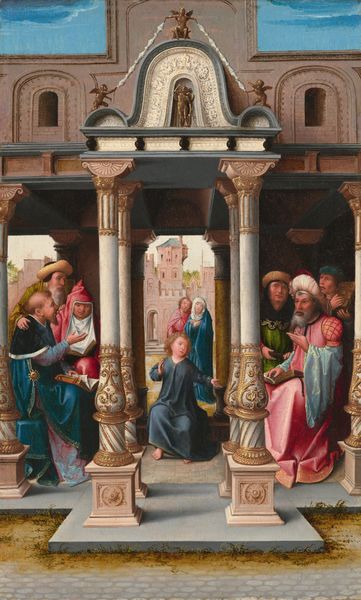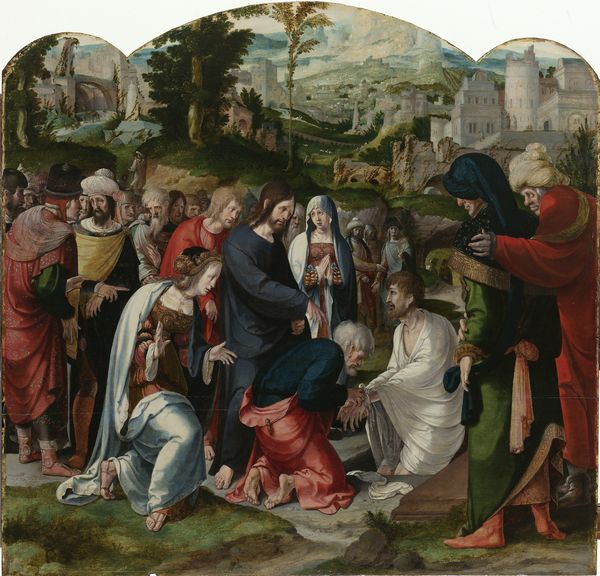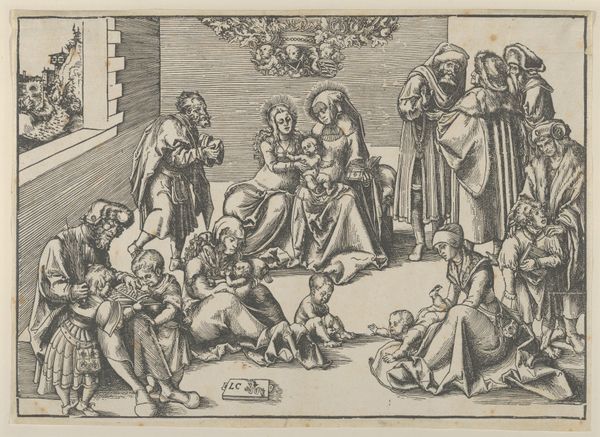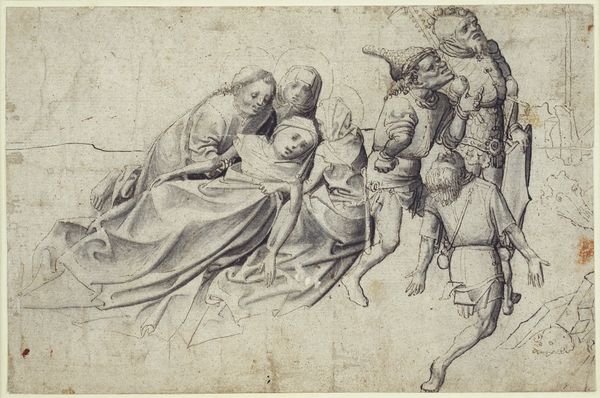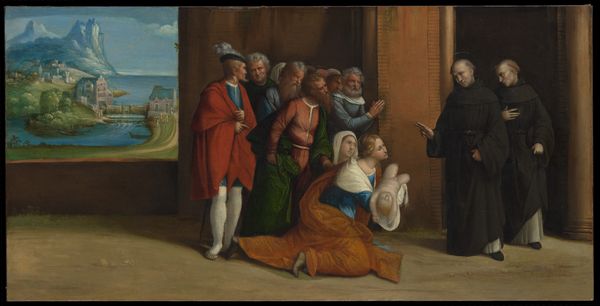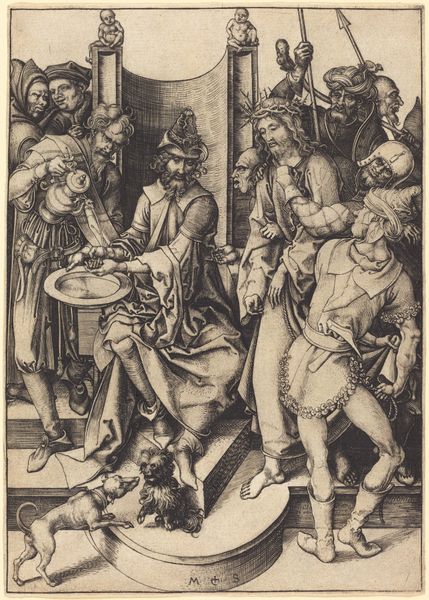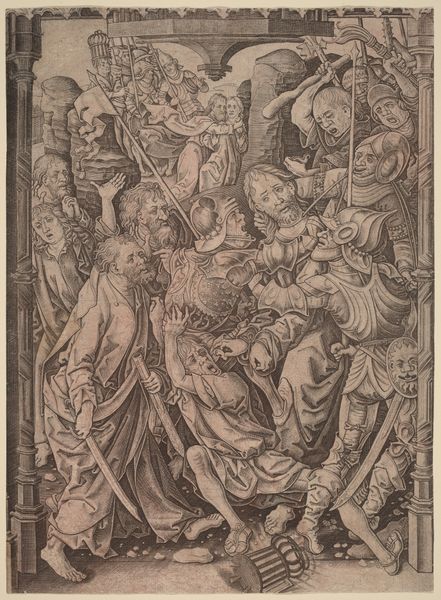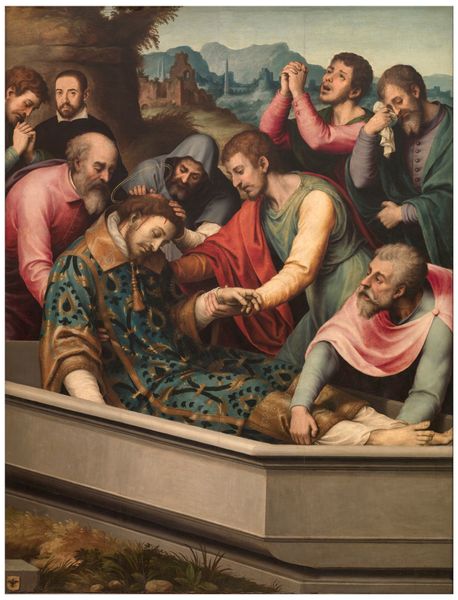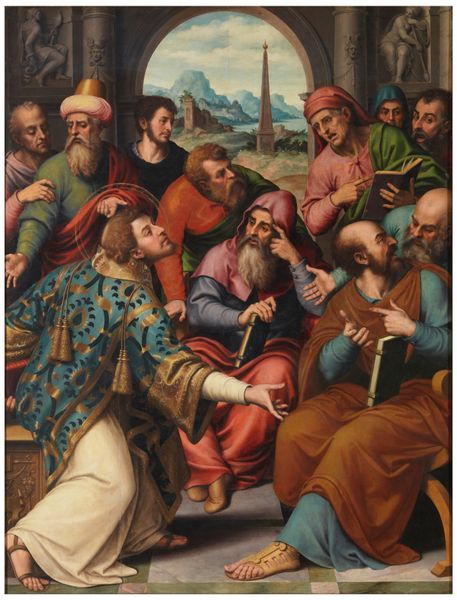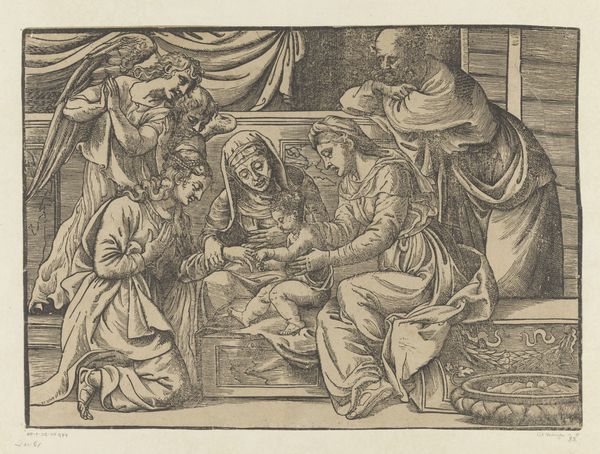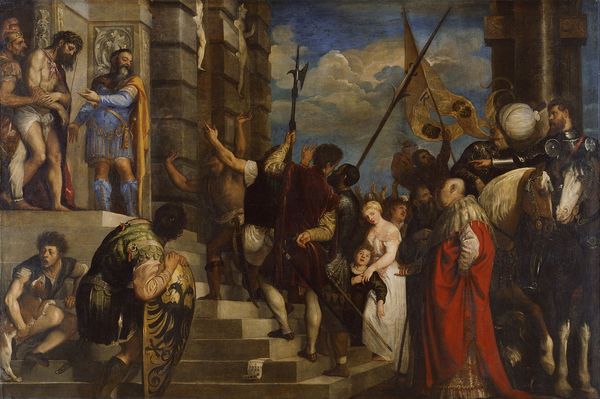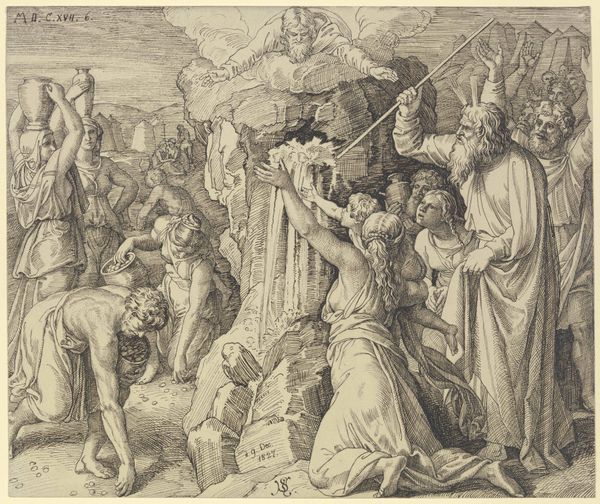
painting, oil-paint
#
portrait
#
narrative-art
#
painting
#
oil-paint
#
figuration
#
11_renaissance
#
oil painting
#
underpainting
#
genre-painting
#
history-painting
#
northern-renaissance
#
christ
Dimensions: 6 1/4 x 8 1/2 in. (15.9 x 21.6 cm)
Copyright: Public Domain
Curator: Looking at Lucas Cranach the Younger’s “Christ and the Adulteress,” dating from 1545 to 1550, what strikes you immediately? Editor: The faces. It’s all about the faces, isn't it? The tight framing forces our gaze to lock onto these very individualized expressions of judgment, accusation, and perhaps a hint of curiosity. Compositionally, the dark background really pushes them forward. Curator: Yes, it’s a fascinating example of Cranach’s workshop's production, probably oil on panel, efficiently reproducing a powerful narrative scene from the New Testament. Consider the context: religious reform and how images like this were consumed and interpreted in a society grappling with complex moral questions, shaped by the Protestant Reformation and emerging capitalism. Editor: Agreed. The way Cranach handles light, particularly on the metallic armour, has to be intentional. The way it’s used emphasizes not just wealth and status, but also that glint of judgment in their eyes. The luminosity gives a near tactile presence. I think, structurally, that it’s a key element in guiding the viewer's reading of the picture's ideological intentions. Curator: The figures are not simply rendered. Look closer at the armour again: that signals the patrons and power structures supporting artistic production during that era. Furthermore, note the almost assembly-line approach of the workshop system that Cranach inherited; what were the working conditions, what labor went into this painting? What did the accessibility of printed images do to painted works, and why create multiples for bourgeois or aristocratic markets? These considerations challenge traditional narratives of authorship and artistic genius. Editor: All well and good. But I keep returning to Christ’s hands, that open, accepting gesture in the visual center of the composition, echoed almost by the way the adulteress's body seems to physically open toward his offer of refuge. It’s the emotional weight balanced against all that heavy societal censure, formalized by the architectural group structure of all those other figures behind. That relationship defines this. Curator: Fair point. This image encapsulates so much about 16th-century moral and economic values, and, it's been insightful to ponder over who made this, for whom, and how it participated in the debates of the time. Editor: Absolutely, the interplay of form and feeling in “Christ and the Adulteress” shows how seemingly simple images create nuanced and profoundly evocative statements.
Comments
No comments
Be the first to comment and join the conversation on the ultimate creative platform.
